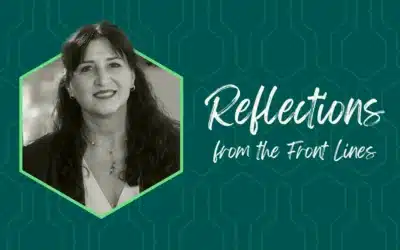Reflections from the front lines serving people experiencing homelessness, at the end of another Summer, celebrating milestones, and adapting through construction.
We are officially on the other side of the hottest months of the year. There is a decrease in temperature that is felt in the air before the sun rises. Shadows are lengthened on the sidewalks and on the streets. Some folks are already excited for Halloween and are planning, decorating, and creating festivity. Closure every year on Summer is a milestone.
Nearly 900 people are sleeping in three shelter spaces on Key Campus. And this week the Keys to Change Street Outreach team counted 108 unsheltered people in the immediate neighborhood. In the expanded area, an additional 288 people were found unsheltered. The total is trending downward. We are not certain why, and we will keep counting, monitoring, and reporting. No celebrating on this front quite yet.
In September, we quietly celebrated the move of our administrative offices into a renovated building. For many years, more than ten, this building was open for homeless men to sleep in. The building was dilapidated, unhealthy, and yet was used as an indoor overflow shelter referred to as the MOS (Men’s Overflow Shelter). Up to 250 men crammed in to sleep on mats on floors and in bunk beds. Women and men were allowed to sleep in the adjacent parking lot, up to another 250 people. I used to call this “street jail,” as it was an alternative to forcing people to move off the streets or be arrested.
When the State Fire Marshall visited the building that was owned by Maricopa County at the time, they declared the building unsafe (rightly so) and gave the County time to phase down its usage as shelter. The County worked with the City of Phoenix, Arizona Department of Housing, and Valley of the Sun United Way on a plan to close the MOS and find housing for as many people as possible. I was at United Way then, and it was an intense time of looking at data, funding temporary pieces of a larger solution, and raising money for permanent supportive housing (PSH) and rapid rehousing. The Campus and partners like CASS and St. Vincent de Paul implemented changes and started to collect more client information on who used the MOS and the parking lot, and they started staffing on-Campus spaces for overnight sleeping to move people out of the MOS/parking lot.
It took a while… United Way matched funding from the Phoenix Industrial Development Authority (IDA) for rapid rehousing. The City of Phoenix committed housing vouchers for PSH. The MOS closed. People moved into housing. And when I started working on the Campus in 2018, the final phase down of the temporary on-Campus overflow happened two months later. We were out of the permanent overflow business, or so we thought.
I remember walking in to the “MOS,” probably in 2019, and having a visceral reaction to the dank, darkness, the ancient “insulation” falling through ceiling tiles. The unhygienic toilet rooms. We decided to clean it out, demo on the inside, and plot for a future use.
At the end of 2021, we made a presentation to the Maricopa County IDA for the Campus 2.0. seeking $7.5M for four phases of renovation to bring the Campus into the 2020s, improving the environment, easing the usage for clients, and adding space for programs and services. Included in that was renovating the “MOS” to become the Keys to Change Administration Building.
And today that is what it is! The relics are gone, the original brick walls are surrounded by new walls. We have a new roof with the entry area open on the inside to see the exposed trusses in remembrance of the building of old. It’s full of natural light. There is a large conference room named for our cherished Mike McQuaid. It’s a major milestone. And I so wish Mike was here to see it. He would be over the moon by the transformation and by the commitment to improving our workspaces.
The next phase of renovation is adding a second story to the Brian Garcia Welcome Center, recreating the entry for clients to improve the flow and experience, and expanding areas for additional program staff. This construction project is interruptive, as it forced us to move the 24/7 Welcome Center into the next-door building, which is an 85-ish year-old structure not super conducive to service delivery. And it is where the Campus started doing the “welcome” functions of intake and assessment a decade ago. It’s temporary and messy. It is another change that I watched shake up the routine of our clients. And another time where I am not surprised at the resiliency of people in adapting to a different process. Next year, another milestone will be achieved when the staff can move back into the renovated Welcome Center.
From there, one more project left, a renovation of the Lodestar Day Resource Center. I’m personally most excited about this opportunity to redesign the space. When the Campus opened in 2005, no one had built a campus for human services like it. There was no model to work from. Everyone did their best, raised a lot of money, and built the Campus. With 20 years of operating and programmatic experience, there is real knowledge and the voice of our clients to input for a redesign. This space will be outstanding.
Taking this moment to pause and reflect has me feeling nostalgic and proud. I’m proud of our team, the service provider partners, our collective clients. Yes, the renovation is for improvement. And it adds stress, confusion, tension, and challenges. Everyone continues to move through it, and when we see what’s on the other side, we know it is so very worth it. I’m reminded, once again, that together we can do difficult things, we can make improvements, and we can end homelessness.


